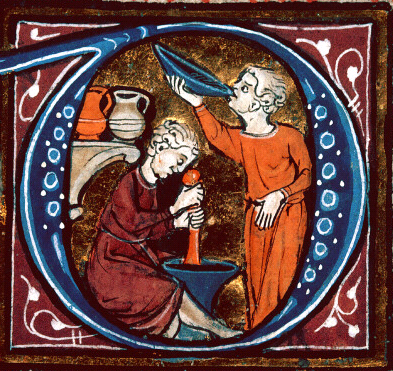Scientists at the University of Nottingham have discovered that a 1,000-year-old Anglo-Saxon remedy for curing eye infections can kill 90% of MRSA bacteria. The recipe, containing garlic, wine and cow bile, comes from a 10th-century volume of Bald’s Leechbook, widely considered to be one of the oldest medical textbooks in the world. We spoke to Professor Christina Lee, who translated the remedy from Old English, about changing perceptions of the Dark Ages and why medieval medicine matters…

You’re based in the School of English – how did you find yourself trialling a medieval medicine?
I teach Old English but I’m interested in cultural responses to disease and disability in the Anglo-Saxon period. This goes back quite a long time; when I was a research assistant, I noticed that medieval people who had had serious conditions had all been looked after. It was a bit of an eye opener for me because I had bought into this idea that during the Middle Ages people were ‘discarded’, but it’s not like that; I could see that people wanted to care. And it changed my attitude to medieval medicine.
Why did you decide to trial this particular remedy?
A few years ago I wrote a paper on leprosy and that started off a string of ideas. I was really pleased when Freya [Harrison – the microbiologist who led the study] got in touch because she’s interested in the Anglo-Saxons as a re-enactor, and we started a group for people interested in infectious disease – historians and people in other departments.
Four of us – [scientists] Aled Roberts, Steve Diggle, Freya and I – had lunch one day and we talked about testing a remedy from the Middle Ages. I mentioned a remedy for styes that had been tested before but came back negative, and they said they’d like to try it again, because it contains ingredients like garlic that are currently being tested [for their antibiotic properties] in laboratories around the world. All the ingredients are fairly easily available, and the recipe actually tells us it’s the ‘best medicine’; how could you not test something that tells you it’s the best?!

This time around the cure was successful. What did you do differently?
It took a lot of trial and error – we’ve been working on it for a year. Lots of previous studies have only tested individual ingredients, but we tried the whole recipe, and we found that it was the combination of these ingredients that made all the difference. We followed it to the letter. Anglo-Saxon recipes don’t give you the quantities, they just tell you which ingredients to use, but in this recipe it does say to add equal amounts on occasion, so that helped.
Are there any plans to use the remedy in modern medicine?
We’re at the beginning of our research, and there’s still a lot of work to be done. It’s heartbreaking because I’m getting a lot of emails from people with MRSA who are asking us to help them, and we just can’t at the moment. But it’s a step in the right direction. The medieval period is dismissed by many, and I appreciate that some strange things did happen, but I don’t think we completely understand their side. We can be very arrogant in thinking we’re much more advanced. I’m sure in 200 years we will also be judged on how we treated people.
Read more about the Middle Ages in the new issue of All About History, or subscribe today and save 25% on the cover price.
